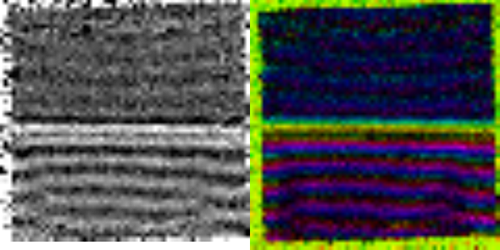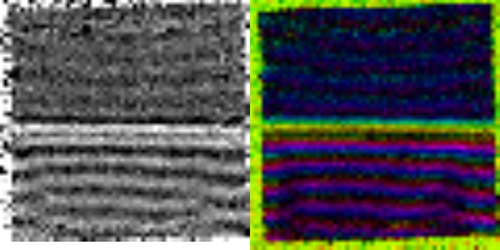Spin Waves Revealed with X-Ray Vision
Harnessing spin waves—collective oscillations of electron spins—as carriers of information might lead to computers that are smaller, faster, and more compact than conventional devices. Now, researchers have used scanning transmission x-ray microscopy (STXM) to directly image such spin waves in yttrium iron garnet (YIG), a magnetic insulator prized for its ability to support spin waves for relatively long periods of time. The result will lead to a better understanding of how spin waves propagate—especially those with wavelengths below 250 nm, which are deemed essential for device miniaturization.
Although STXM has already been used to study spin waves in metallic thin films, YIG has historically remained impervious to x-ray vision: the thick, single-crystal substrate that gives the material its exceptional properties also blocks x rays. To work around this hurdle, Johannes Förster, of the Max Planck Institute for Intelligent Systems in Germany, and colleagues used a mechanical polisher and ion beams to clear out windows in the substrate of two YIG samples. Copper strips on the samples carried alternating currents that triggered spin waves in the YIG. By focusing x rays through the sample via the substrate windows, the team was able to directly see spin waves as small as 100 nm rippling away from the copper strips.
While the spin waves behaved as expected, the team says that their experiment shows the potential for x-ray microscopy to observe spin waves at resolutions that surpass those possible with optical microscopes.
This research is published in Physical Review B.
–Christopher Crockett
Christopher Crockett is a freelance writer based in Arlington, Virginia.





